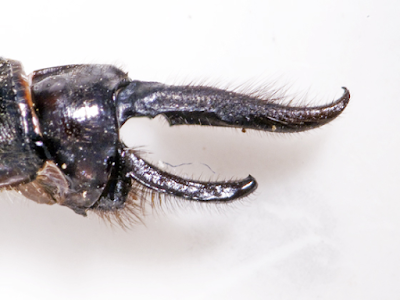Mating damselflies: Love is in the air.
 |
| Familiar bluet damselfly mating wheel. |
Males of Odonata, the family of insects that includes dragonflies and damselflies, have a pair of claspers at the end of their tail. These appendages (see below) have one sole purpose; they allow the male to attach himself to a female for the purpose of mating. In the above photo, the male (top damselfly with spotted abdomen) has attached himself to the back of the female's head. In response, the female bends her abdomen around to bond with the male in a mating wheel.
 |
| male clasper (https://bugguide.net/node/view/264557) |
This position is maintained both for the fertilization of the eggs and afterwards for laying. The male maintains his grasp as a means of preventing other males from clasping on. The female extends her abdomen and the two fly off together with the female touching the water and depositing an egg with each maneuver.
I find the heart-shaped mating wheel an interesting metaphor for today, it being Valentine's day. Damselflies don't, of course, experience love the way we do, but there is the irresistible urge to mate. The urge is so strong in fact that some females may receive serious injuries from the clasper organ. It is not unusual for insects to die soon after mating. This results for a variety of reasons, from being eaten (male praying mantids), from being damaged (female dragonflies), or because the process has so exhausted the bodies' resources (mayflies).
I hope you have a wonderful Valentine's day.
Thanks for reading.
Eric Svendsen www.ericspix.com



Comments
Post a Comment